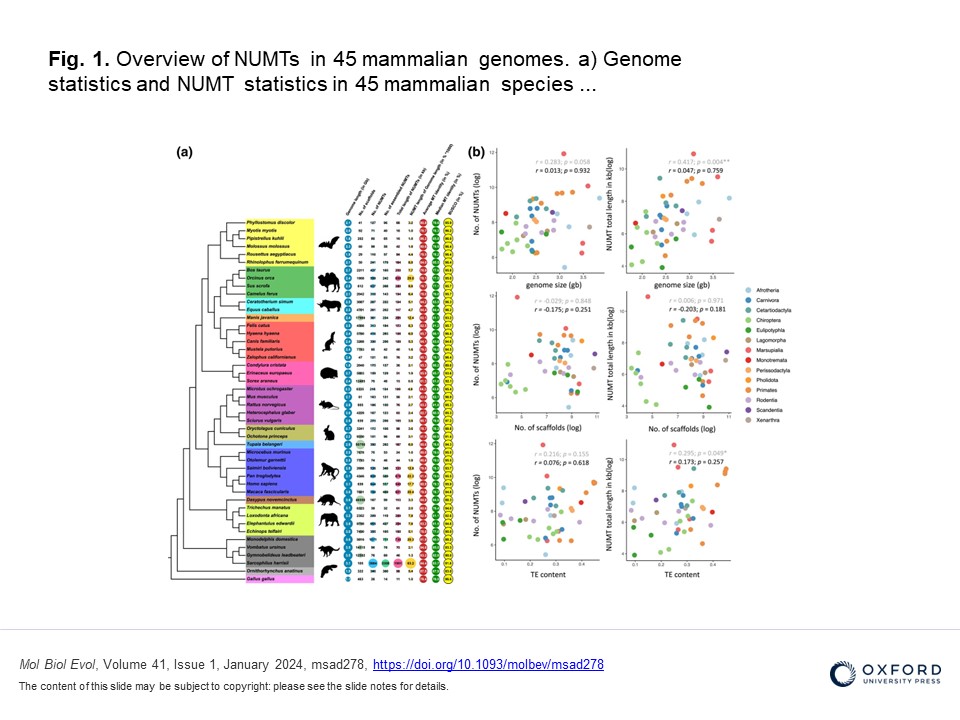GDIC lecturer, Dr Zixia Huang develops a novel method to explore the evolution
"Comparative Genome Microsynteny Illuminates the Fast Evolution of Nuclear Mitochondrial Segments (NUMTs) in Mammals" is an article written by Dr Zixia Huang and his colleagues, recently printed in prestigious journal Molecular Biology and Evolution.
"We developed a novel method to explore the evolution of nuclear mitochondrial DNA segments (NUMTs) across mammals and highlighted the merit of NUMTs as alternative molecular markers in phylogenetic inference" - says Dr Huang.
The escape of DNA from mitochondria into the nuclear genome (nuclear mitochondrial DNA, NUMT) is an ongoing process. Although pervasively observed in eukaryotic genomes, their evolutionary trajectories in a mammal-wide context are poorly understood. The main challenge lies in the orthology assignment of NUMTs across species due to their fast evolution and chromosomal rearrangements over the past 200 million years. To address this issue, we systematically investigated the characteristics of NUMT insertions in 45 mammalian genomes and established a novel, synteny-based method to accurately predict orthologous NUMTs and ascertain their evolution across mammals. With a series of comparative analyses across taxa, we revealed that NUMTs may originate from nonrandom regions in mtDNA, are likely found in transposon-rich and intergenic regions, and unlikely code for functional proteins. Using our synteny-based approach, we leveraged 630 pairwise comparisons of genome-wide microsynteny and predicted the NUMT orthology relationships across 36 mammals. With the phylogenetic patterns of NUMT presence-and-absence across taxa, we constructed the ancestral state of NUMTs given the mammal tree using a coalescent method. We found support on the ancestral node of Fereuungulata within Laurasiatheria, whose subordinal relationships are still controversial. This study broadens our knowledge on NUMT insertion and evolution in mammalian genomes and highlights the merit of NUMTs as alternative genetic markers in phylogenetic inference.
More information (opens in a new window)here
